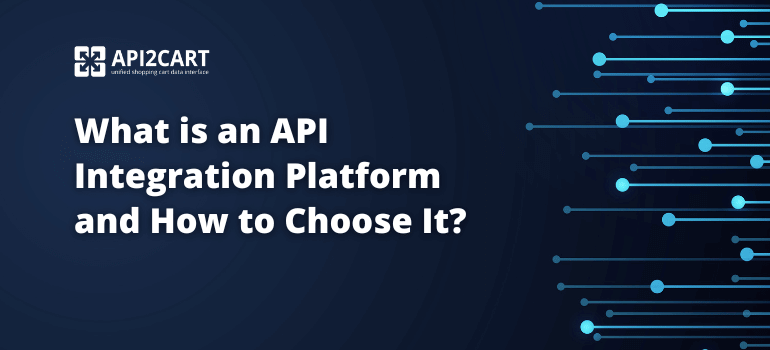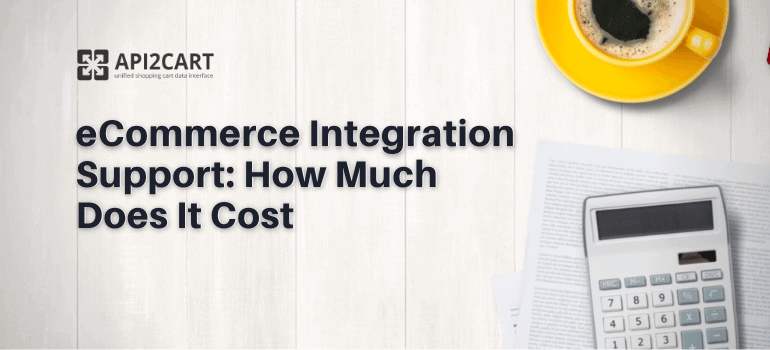
Today, eCommerce software providers looking to get an edge on the market should consider using a universal shopping cart API integration solution in order to connect their systems with as many shopping platforms as possible without investing too much time, money and effort into this task.
Whether you are offering order management, repricing, marketing automation, multichannel, or dropshipping automation services, it becomes mandatory for you to understand how you can develop integrations with multiple eCommerce platforms. This will enable you to provide better services to your clients and allow you unrestricted access to all the data you need to run your business.
Below, we’ll dive deeper into the universal shopping cart API concept and reveal to you the meaning of API integration in the eCommerce sphere.
What is an API and How Does It Work?
The term API was first coined in 1940, being used to describe an interface used for end-user-facing programs. The application programming interface is much broader today, including also hardware interfaces and utility software. In the eCommerce sphere, the API allows the seamless transfer of data between the shopping cart and the eCommerce software.
Every single API contains specific function calls which are used to tell the software what type of info to collect. For example, as an eCommerce software provider, you can use these function calls to collect data related to your clients’ e-store products, descriptions, orders, prices, baskets, shipments, or taxes.
The API enables various types of software and apps to interact with each other, exchanging data in an automated environment. Basically, you can use the API to send an inquiry “call” to a server with the purpose of pulling out the data you need. There are four methods you can use to work with this data:
- GET: you can use this method to gather information
- PUT: use PUT to update data pieces
- POST: create new resources
- DELETE: remove an item or several items
These methods are part of the API request. On the other hand, the API response is the actual information you receive after making a request. Normally, the response comes back in a data format that is easy to manipulate, such as JSON or XML. The responses can vary, based on the actual data in the system.
For example, some responses can be:
- 100: continue
- 200: ok
- 204: no content
- 302: found
- 308: permanent redirect
- 404: not found
- 423: locked
- 504: gateway timeout
The Meaning of API Integration in the eCommerce
As said above, APIs are used today in a multitude of industries and niches, such as banking, retail, cloud, automotive, manufacturing, and eCommerce. Pulling data from third-party systems is almost mandatory for all modern software solutions, regardless of the vertical or industry.
In the eCommerce industry, the concept of API integration has become quite important of late, as more and more software providers have come to realize the necessity of collecting their customers’ data and working with it. The process of API integration in the eCommerce sphere involves tying the specific software to the APIs of shopping carts like Shopify, Magento, X-Cart, WooCommerce, and ZenCart.
Once such a connection has been created, you’ll be able to successfully access any type of data related to your clients’ orders, taxes, products, prices, or stocks. For example, if you connect your software to WooCommerce, Magento, and Shopify, you’ll be able to work with the data from e-stores based on these platforms.
Chatbot providers, for instance, can integrate their systems with shopping platforms to pull out data related to products, stocks, baskets, and customers’ interactions, thus being able to provide their functionalities to e-store owners related to order creation, remarketing, and sending tracking info. At the same time, inventory management solutions can leverage API integration to shopping carts to seamlessly retrieve data related to products, orders, and customers, and in turn, sync the inventory across multiple selling platforms and channels.
Ultimately, API integration development enables you to seamlessly transfer data between systems, data that might otherwise require manual input.
Usage of Universal Shopping Cart API
Setting up a connection to today’s largest shopping carts is mandatory if you want to grow your business, properly service your customers, and expand your software by implementing improved services. However, the big issue here is that creating a separate connection to each shopping cart is extremely tedious and requires a substantial financial effort, especially since every platform has its API specifics, so you need to find people with specific knowledge on creating API connections.
The alternative to performing an in-house integration is choosing a universal shopping cart API such as API2Cart that can automate the connection tasks and allows you to connect to multiple shopping carts simultaneously. With API2Cart, you can connect your eCommerce software to 60+ shopping carts with minimum financial investment and no ongoing maintenance involvement.
This modern unified shopping cart data interface takes API connectivity in the eCommerce sphere to the next level, allowing you to seamlessly connect to millions of potential clients using platforms such as WooCommerce, Amazon, Etsy, eBay, X-Cart, Magento, or OpenCart. All of this comes at a very good price for you and with a minimum investment of personnel, such as developers, project managers, or QA specialists.
Conclusion
The process of development and integration via universal shopping cart API is recommended to all eCommerce software providers looking to get an edge in their niche and expand the functionality of their services. To learn more about how you can benefit from API2Cart’s integration service, do not hesitate to contact us now.
FAQs
This simplifies integrations, saves time and reduces the necessity of custom development and makes integrations easier to maintain and scale.
1. API2Cart - Provides a unified API that allows you to integrate your SaaS with 60+ eCommerce platforms and marketplaces, including Shopify, Magento, WooCommerce, BigCommerce, and others, at once - all through a single integration.
2. Rutter - A unified API for connecting various eCommerce platforms and applications.
3. Merge - This is a universal API to connect with several software tools and a wide range of platforms.
4. Apideck - Provides a standardized API to integrate SaaS applications to eCommerce applications.
5. Zapier - It is a universal API that enables automation of work with 5,000+ applications, including eCommerce platforms, without a high-level of technical skills.
These platforms facilitate smooth integrations between various eCommerce systems that streamline operations and minimize time of development.



